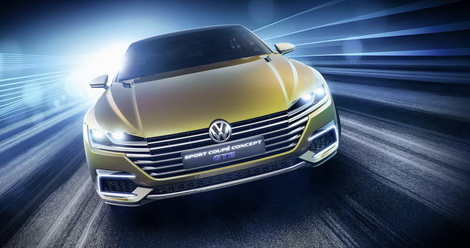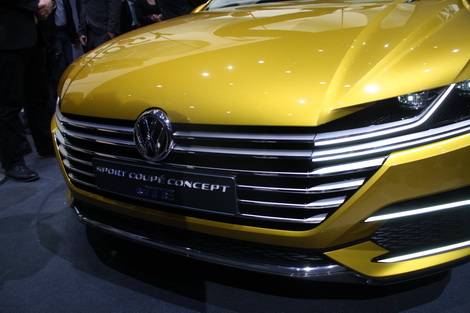Volkswagen has premiered its latest four-door concept called the Sport Coupe Concept GTE, and it could very well give us a strong indication of how the next CC saloon could look.
The tech-laden car has also given designers an opportunity to experiment with just how best future technology could be integrated into car design.
Exterior
The most obvious and visually dramatic design elements of this car are the front-end. Specifically where and how the bonnet meets the front grille and how it integrates the headlights to form one cohesive design. We know that sounds very much like marketing fluff, but it really is a lovely piece of design work.
Its sloping roofline is still more sporting saloon than coupé but the way that it forms a shallow angle with the car's C-pillar does give it a very elegant side profile. Like the standard Passat, the lower floor and therefore seating position means that such a low roofline doesn't pose quite the same issue for rear passenger ingress and egress as it may once have. Adding even more presence to the car are its 21-inch five-spoke wheels along with the integration of air exhaust openings in the front wings, doors and bonnet.
Interior
Proving to be just as stylish and elegant inside as it is outside; the Sport Coupe Concept GTE interior is an exercise in how to create an avant-garde atmosphere. With seating for four passengers, the minimal design creates an airy feeling throughout. Both front and rear passengers get their own touchscreen infotainment interfaces, while the panoramic sunroof bathes occupants in light.
Mechanicals
Powering the Sport Coupe Concept GTE is a 3.0-litre V6 TSI engine, which is coupled with a plug-in hybrid system that delivers a total of 380hp, enabling it to comfortably reach its top speed of 250km/h. It also manages to complete the dash to 100km/h in 5.0 seconds, but perhaps what is more important is that thanks to its plug-in hybrid system it consumes just 2 litres/100km and emits only 46g/km of CO2.
Anything else?
The Sport Coupe Concept GTE also comes with a smartwatch that is capable of measuring the driver's biometric data. For example as soon as the driver inputs a destination into the car's satellite navigation the system can use this biometric data to choose a route that is more suited to the driver's preferences. It can choose between picking an ambitious, challenging road or one that is more relaxing to drive on, perhaps taking a more direct route.





